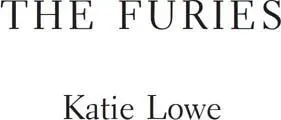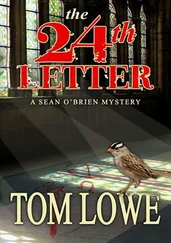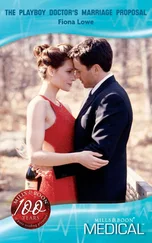Katie Lowe - The Furies
Здесь есть возможность читать онлайн «Katie Lowe - The Furies» — ознакомительный отрывок электронной книги совершенно бесплатно, а после прочтения отрывка купить полную версию. В некоторых случаях можно слушать аудио, скачать через торрент в формате fb2 и присутствует краткое содержание. Жанр: unrecognised, на английском языке. Описание произведения, (предисловие) а так же отзывы посетителей доступны на портале библиотеки ЛибКат.
- Название:The Furies
- Автор:
- Жанр:
- Год:неизвестен
- ISBN:нет данных
- Рейтинг книги:4 / 5. Голосов: 1
-
Избранное:Добавить в избранное
- Отзывы:
-
Ваша оценка:
- 80
- 1
- 2
- 3
- 4
- 5
The Furies: краткое содержание, описание и аннотация
Предлагаем к чтению аннотацию, описание, краткое содержание или предисловие (зависит от того, что написал сам автор книги «The Furies»). Если вы не нашли необходимую информацию о книге — напишите в комментариях, мы постараемся отыскать её.
The Furies — читать онлайн ознакомительный отрывок
Ниже представлен текст книги, разбитый по страницам. Система сохранения места последней прочитанной страницы, позволяет с удобством читать онлайн бесплатно книгу «The Furies», без необходимости каждый раз заново искать на чём Вы остановились. Поставьте закладку, и сможете в любой момент перейти на страницу, на которой закончили чтение.
Интервал:
Закладка:


Copyright Contents Cover Title Page Copyright Dedication Epigraphs The strange thing … Autumn Chapter 1 Chapter 2 Chapter 3 Chapter 4 Chapter 5 Winter Chapter 6 Chapter 7 Chapter 8 Chapter 9 Chapter 10 Spring Chapter 11 Chapter 12 Chapter 13 Chapter 14 Chapter 15 Chapter 16 Summer Chapter 17 Autumn Chapter 18 Acknowledgements About the Publisher
Harper Voyager
An imprint of HarperCollins Publishers Ltd
1 London Bridge Street
London SE1 9GF
www.harpercollins.co.uk
First published in Great Britain by HarperCollins Publishers 2019
Copyright © Katie Lowe 2019
Cover photograph © Lysandra Coules/Arcangel Images
Cover layout design by Micaela Alcaino © HarperCollins Publishers Ltd 2019
Katie Lowe asserts the moral right to be identified as the author of this work.
A catalogue copy of this book is available from the British Library.
This novel is entirely a work of fiction. The names, characters and incidents portrayed in it are the work of the author’s imagination. Any resemblance to actual persons, living or dead, events or localities is entirely coincidental.
All rights reserved under International and Pan-American Copyright Conventions. By payment of the required fees, you have been granted the non-exclusive, non-transferable right to access and read the text of this e-book on screen. No part of this text may be reproduced, transmitted, down-loaded, decompiled, reverse engineered, or stored in or introduced into any information storage and retrieval system, in any form or by any means, whether electronic or mechanical, now known or hereinafter invented, without the express written permission of HarperCollins.
Source ISBN: 9780008288976
Ebook Edition © February 2019 ISBN: 9780008288990
Version: 2019-11-08
Dedication Contents Cover Title Page Copyright Dedication Epigraphs The strange thing … Autumn Chapter 1 Chapter 2 Chapter 3 Chapter 4 Chapter 5 Winter Chapter 6 Chapter 7 Chapter 8 Chapter 9 Chapter 10 Spring Chapter 11 Chapter 12 Chapter 13 Chapter 14 Chapter 15 Chapter 16 Summer Chapter 17 Autumn Chapter 18 Acknowledgements About the Publisher
For Maria
Epigraphs Contents Cover Title Page Copyright Dedication Epigraphs The strange thing … Autumn Chapter 1 Chapter 2 Chapter 3 Chapter 4 Chapter 5 Winter Chapter 6 Chapter 7 Chapter 8 Chapter 9 Chapter 10 Spring Chapter 11 Chapter 12 Chapter 13 Chapter 14 Chapter 15 Chapter 16 Summer Chapter 17 Autumn Chapter 18 Acknowledgements About the Publisher
While all melts under our feet, we may well grasp at any exquisite passion, or any contribution to knowledge that seems by a lifted horizon to set the spirit free for a moment, or any stirring of the senses, strange dyes, strange colours, and curious odours, or work of the artist’s hands, or the face of one’s friend. Not to discriminate every moment some passionate attitude in those about us, and in the very brilliancy of their gifts some tragic dividing of forces on their ways, is, on this short day of frost and sun, to sleep before evening.
Walter Pater, The Renaissance: Studies in Art and Poetry , 1868
Observe these generation of Witches, if they be at any time abused by being called Whore, Theefe, &c, by any where they live, they are the readiest to cry and wring their hands, and shed tears in abundance & run with full and right sorrowfull acclamations to some Justice of the Peace, and with many teares make their complaints: but now behold their stupidity; nature or the elements reflection from them, when they are accused for this horrible and damnable sin of Witchcraft, they never alter or change their countenances nor let one Teare fall.
Matthew Hopkins, The Discovery of Witches , 1647
Contents
Cover
Title Page
Copyright
Dedication
Epigraphs
The strange thing …
Autumn
Chapter 1
Chapter 2
Chapter 3
Chapter 4
Chapter 5
Winter
Chapter 6
Chapter 7
Chapter 8
Chapter 9
Chapter 10
Spring
Chapter 11
Chapter 12
Chapter 13
Chapter 14
Chapter 15
Chapter 16
Summer
Chapter 17
Autumn
Chapter 18
Acknowledgements
About the Publisher
The strange thing, they said, wringing their hands and whispering as though we couldn’t hear, or weren’t listening through extension phones or cracks in the walls, was that there was no known cause of death.
Inconclusive, they said, as though that changed the fact of it, which was this: a sixteen-year-old girl, dead on school property, without a single clue to suggest why or how. No unexplained prints on the body, the forensic examination finding no trace of violence, nor rape, nor a single fibre that could not be linked to the girl, her friends, or her mother, whom she had hugged for the last time that morning as she left for school. It was as though her heart had simply stopped, her blood stilled in her veins, preserving her forever in a single moment, watchful as the dawn.
The papers blurred it out, took suggestive photographs of the screen the police erected around the scene, an implicit acknowledgement of the horrors that lay within. But by that time, I’d already seen it. I see it now, sometimes, when I’m struggling to sleep. It’s etched there, in my mind, not because it was horrific, nor due to some long-standing, unresolved trauma. No, my feeling is quite the opposite: a thrill, cold and sweet, in the recall.
I think of the scene, now, because it was so perfectly composed, like a Renaissance painting, the girl’s neck angled slightly, like La Pietà , though I did not see that, then. It was over a decade later, on a tour of the Vatican, that I first realized the likeness. My students, for obvious reasons, thought that my solitary teardrop as I explained the history of the sculpture belied some exquisite taste on my part, a visceral response to the beauty of Michelangelo’s work; I did nothing to disabuse them of that notion.
She was beautiful when she was alive – a child just discovering her power, knowing herself, all collarbones and blooming flesh – but death, it must be said, gave her something of the sublime. A little like the poem, ‘La Gioconda’ by Michael Field: ‘Historic, side-long, implicating eyes; / A smile of velvet’s lustre on the cheek; / Calm lips the smile leads upward; hand that lies / Glowing and soft, the patience in its rest / Of cruelty that waits and doth not seek / For prey …’ An underrated duo to my mind. How I love those words, even now.
In this pose they found her, eyes open, sitting upright on a swing. Immaculately put together, alive but for the blue threads of deoxygenated blood in place of youth’s blush; the impossibly delicate silver threads that tied her hands to the chains, the stiffness of her back, the result of rigor mortis, by the time she was found on the still gently rocking swing. Feet crossed at the ankles, ladylike, though one of her shoes had fallen to the ground below. All this, in a thin, white dress, turned almost see-through by the morning dew. A modern masterpiece, precise and profound.
‘So tragic,’ they said. ‘Another angel taken home,’ written on cards taped to store-bought bouquets, ink dripping in the rain. In the markets, beet farmers and fishermen muttered under their breaths; the local newspapers – whose usual focus was limited to the town’s growing seagull population and the many, endless failures of the one-way system – were filled with photos of her for weeks, her school photo tacked on their banner, ‘Never Forget’, in an incongruously jaunty font beneath. The news reporters – the real reporters, national, international, such was the allure of the image – lurked among the townspeople for weeks, listening for hushed conversations, searching for clues. Hotels saw a dramatic uplift in room occupancy; restaurateurs joked grimly that death should visit more often. That it had been, by all accounts, a very good year.
Читать дальшеИнтервал:
Закладка:
Похожие книги на «The Furies»
Представляем Вашему вниманию похожие книги на «The Furies» списком для выбора. Мы отобрали схожую по названию и смыслу литературу в надежде предоставить читателям больше вариантов отыскать новые, интересные, ещё непрочитанные произведения.
Обсуждение, отзывы о книге «The Furies» и просто собственные мнения читателей. Оставьте ваши комментарии, напишите, что Вы думаете о произведении, его смысле или главных героях. Укажите что конкретно понравилось, а что нет, и почему Вы так считаете.












